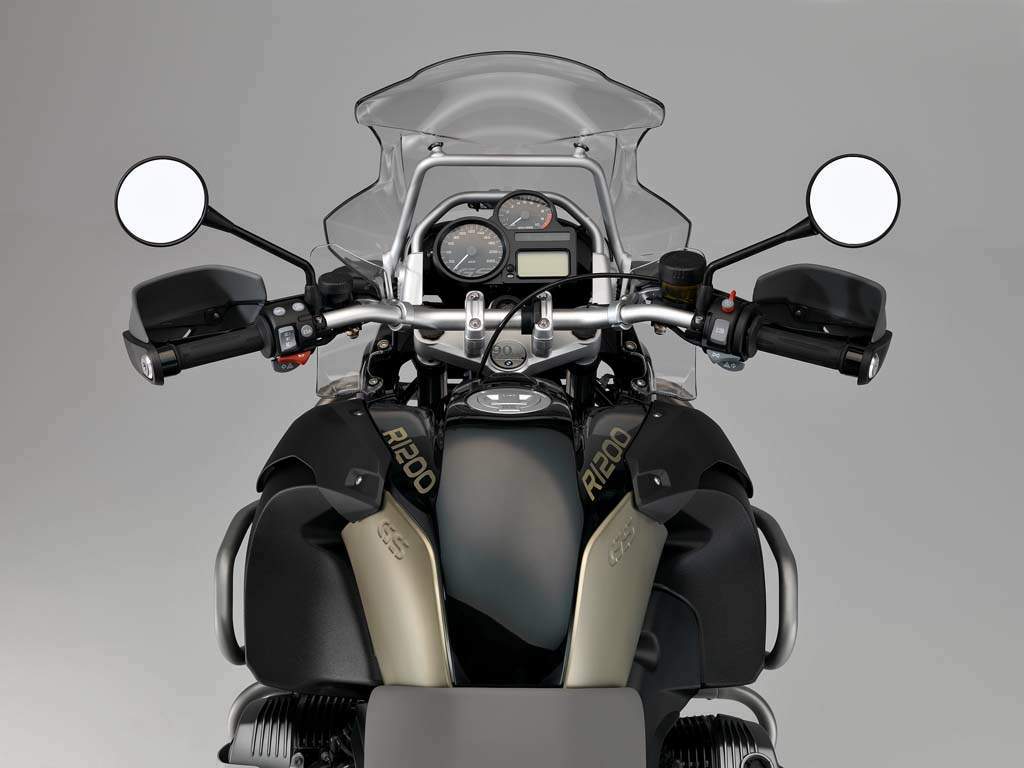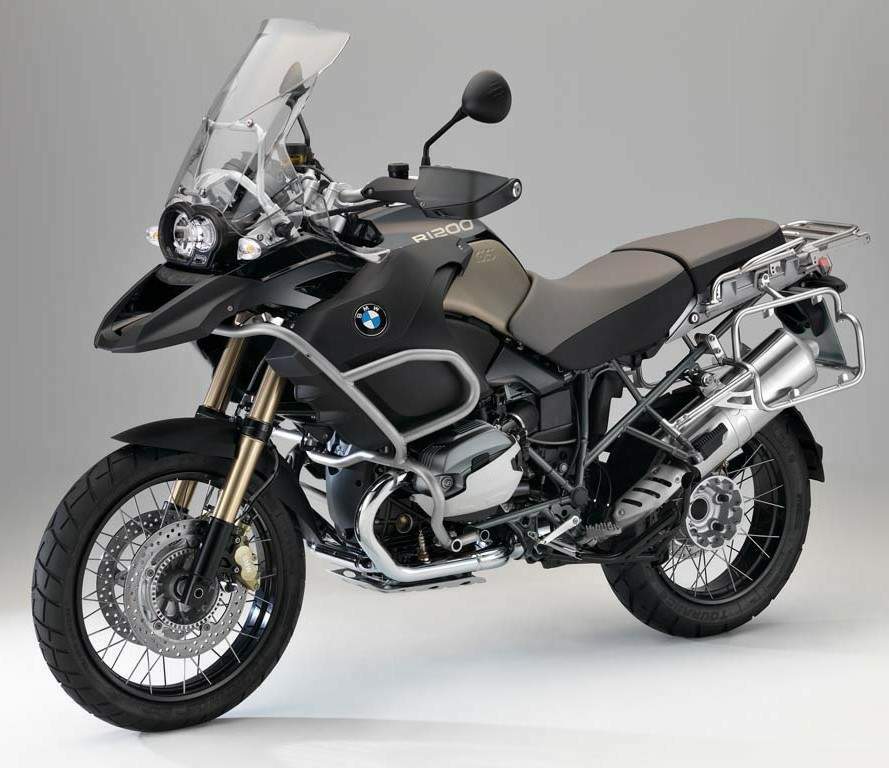
|
|
|
|
|
|
Classic Bikes
Custom Bikes
Individual
Racing Bikes AJP
AJS
Aprilia
Ariel
Avinton / Wakan
Bajaj
Benelli
Beta
Bimota
BMW
Brough Superior
BRP Cam-Am
BSA
Buell / EBR
Bultaco
Cagiva
Campagna
CCM
CF Moto
Combat Motors
Derbi
Deus
Ducati
Excelsior
GASGAS
Ghezzi Brian
Gilera
GIMA
Harley Davidson
Hero
Highland
Honda
Horex
Husaberg
Husqvarna
Hyosung
Indian
Jawa
Kawasaki
KTM
KYMCO
Laverda
Lazareth
Magni
Maico
Mash
Matchless
Mondial
Moto Guzzi
Moto Morini
MV Agusta
MZ / MuZ
NCR
Norton
NSU
Paton
Peugeot
Piaggio
Revival Cycles
Roland Sands
Royal Enfield
Sachs
Sherco
Sunbeam
Suzuki
SWM
SYM
Triumph
TVS
Ural
Velocette
Vespa
Victory
Vincent
VOR
Voxan
Vyrus
Walt Siegl
Walz
Wrenchmonkees
Wunderlich
XTR / Radical
Yamaha
Zero
Video
Technical
Complete Manufacturer List
|
BMW R 1200GS Adventure 90th Anniversary
Special
|
|
Make Model |
BMW R 1200GS Adventure 90th Anniversary |
|
Year |
2013 |
|
Engine |
Four stroke, two cylinder horizontally opposed Boxer, DOHC, 4 valves per cylinder |
|
Capacity |
1170 cc / 71.4 cub in. |
| Bore x Stroke | 101 x 73 mm |
| Compression Ratio | 12.0:1 |
|
Cooling System |
Air/oil cooled |
|
Induction |
BMS-K+, 50mm Throttle butterfly dia |
|
Ignition |
BMS-K |
|
Starting |
Electric |
| Electrical System |
Alternator three-phase alternator 720 W Battery 12 V / 14 Ah, maintenance-free |
| Clutch |
Single-plate dry clutch, ∅180mm |
| Exhaust management | Fully-controlled three-way catalytic converter |
|
Max Power |
81 kW / 110 hp @ 7750 rpm |
|
Max Torque |
120 Nm / 12.2 kgf-m / 88 lb-ft @ 6000 rpm |
|
Transmission |
6 Speed |
|
Drive |
Shaft |
| Gear Ratios | 1st 2.375 / 2nd 1.696 / 3rd 1.296 / 4th 0.065 / 5th 0.939 / 6th 0.848:1 |
| Frame | Tubular steel frame, load-bearing power unit |
|
Front Suspension |
Telelever, stanchion ∅41mm, central spring strut, spring preload 9 times mechanically adjustable. |
|
Front Wheel Travel |
210 mm / 8.3 in. |
|
Rear Suspension |
Die-cast aluminium single-sided swinging arm with BMW Motorrad Paralever, WAD strut (travel-related damping), spring pre-load hydraulically adjustable to continuously variable levels by means of handwheel, rebound damping adjustable. |
|
Rear Wheel Travel |
220 mm / 8.7 in. |
|
Front Brakes |
2 x ∅305mm Discs, 4 piston caliper, Optional: BMW Motorrad Integral ABS |
|
Rear Brakes |
Single ∅265mm disc, 2 piston caliper, Optional: BMW Motorrad Integral ABS |
|
Front Tyre |
110/80 ZR19 |
|
Rear Tyre |
150/70 ZR17 |
| Rim, Front | 2.50 x 19" |
| Rim, rear | 4.00 x 17" |
| Wheelbase | 1507 mm / 59.3 in |
| Rake | 25.7° |
| Castor | 101 mm / 3.97 in. |
| Dimensions |
Length: 2210 mm / 87.0 in. Width: 915 mm / 36.0 in. Height: 1450 mm / 57.1 in. |
| Seat Height | 890 - 910 mm / 35.0 - 35.8 in. |
|
Dry Weight |
223 kg / 492 lbs |
| Wet-Weight | 256 kg / 564 lbs (road ready, fully fueled ) |
|
Fuel Capacity |
33 L / 8.7 US gal |
|
Reserve Tank |
4L / 1.1 US gal |
|
Consumption Average |
6.3 L/100 km / 15.7 km/l / 36.9 US mpg |
|
Standing ¼ Mile |
12.6 sec |
|
Top Speed |
193 km/h / 120 mph |
BMW Motorrad are celebrating their 90th anniversary (‘90 Jahre BMW Motorrad’) which include the R1200GS Adventure, R1200RT and R1200R, remain mechanically unchanged but get an exclusive paintjob which differentiates these machines from the regular ones.
All three models come in a Sapphire Black Metallic color with matte black engines, gold anodized suspension and brakes, and asphalt gray metallic swingarms, trailing arms and rear frames, and granite gray metallic cylinder head covers, and a nickel-plated polished brass plate on the upper fork.
The 90 Jahre BMW Motorrad edition R1200R and R1200RT also get granite gray metallic wheels, fork bridge and front axle bearings.

BMW has revolutionized its sacred boxer-Twin. It is
not the first time, but switching from traditional air cooling (air/oil cooling,
lately) to liquid cooling symbolizes the most radical departure from the reasons
that, in 1923, led BMW technician Max Friz to turn 90 degrees an
already-existing longitudinal boxer-Twin to create the R32 model. This was the
first bike featuring a transversely mounted boxer-Twin that cooled much better
than when placed according to the original orientation.
Now, what BMW calls “precision cooling,” derived from its experience with
Formula One engines, circulates a specific coolant only around the sections of
the engine that experience the highest temperatures: the heads and upper section
of the cylinders where hot combustion gases expand. The rest of cooling remains
entrusted to air circulating through appropriately dimensioned fins. The coolant
is based on glycolethylene like that used in aircraft piston engines and allows
the use of two inconspicuous radiators to keep the BMW R series’ “clean” look.
Compared to the previous air/oil cooling system, this latest one increases
weight by six pounds.
More INTERMOT 2012 Features
The new engine retains the same 101.0 x 73.0mm bore-and-stroke measurements of
the previous R1200, but that is where the commonality ends. The thermodynamic
section is totally new and much more rationally designed and laid out than it
was in the last “radial-valve” unit that, among other complexities, included
camshafts with one inlet and one exhaust cam lobe each. Now, the dohc valvetrain
is simplified and driven by a single loop of chain. Valve diameters are 40mm
(inlet) and 34mm (exhaust), and the valves are angled at 8 degrees and 10
degrees, respectively, for an included angle of only 18 degrees. This narrow
included angle and the finger-type cam followers are also inspired by F1
engines. The combustion chamber is very compact and a 12.5:1 compression ratio
has been achieved with slightly dished pistons for a high thermodynamic
efficiency.
The engine breathes through downdraft 52mm throttle bodies to deliver a claimed
125 horsepower at 7700 rpm and 92.2 foot-pounds of peak torque at 6500 rpm. The
crankshaft is now much more compact, thanks to the reduced width of the
connecting rods and consequent reduced parallel misalignment of the opposing
cylinder. This was possible thanks to the enlarged diameter of the crank
journals, from 48mm to 50, which increased the load capacity of the related
bearings, thus reducing their width. The main journal diameters were reduced
from 60mm to 55. The new crankshaft is more rigid and lighter. The reduced
misalignment of the cylinders causes less rocking imbalance and related
vibrations, and favors the much-higher rotational speed needed to produce the
new level of power.
Also new are the oil-bath multi-disc clutch and six-speed gearbox, which is now
fully integrated into the crankcase for additional compactness and smoothness of
operation. The new clutch is a slipper-type, and the shaft drive uses lighter
components. The final drive and single-sided swingarm are now moved to the left
side.

The new R1200GS abounds with electronic controls. Throttle actuation is “by
wire,” and the five riding and engine-response modes (Rain, Road, Dynamic,
Enduro and EnduroPro) are rider-selectable. Of course, ABS and traction control
are included.
Unlike the engine, the frame is only marginally revised. The new GS spans the
same 59.3 inches and has its steering geometry set at a sensible 25.5 degrees
for 3.9 in. of trail. Front Telelever suspension now sports stanchions with
diameters reduced from 41mm to 37, while swingarm length has been increased from
21.1 in. to 23.1. BMW electronically managed ESA semi-active suspension is
included. Specifically developed for the GS, front and rear tires are Metzeler
Tourances, 120/70-19 front and 170/60-17 rear. These new Metzelers are more
touring-oriented, and the new GS uses Brembo Monobloc radial-mount brake
calipers in combination with double 305mm rotors to haul the big Beemer to a
stop.
With a new LED headlight and a more protective and easily adjustable windshield,
the new—revolutionary, even—engineering in the R1200GS is not all visible, but
the boxer retains its signature adventure-bike look. Maybe more importantly for
GS fans and BMW, it retains the key elements of BMW-ness created nearly a
century ago by Max Fritz. Nobody mistook the R32 for anything else on the road,
and nobody will mistake the latest R1200GS for anything else, either.

|
Any corrections or more information on these motorcycles will be kindly appreciated. |